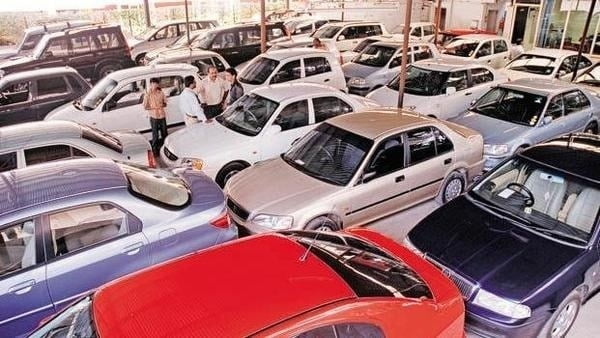
Even as new car sales have slowed down in the recent past, the pre-owned car market has continued to grow over the past year and is larger than the new car market now. Consider this: In 2018-19, while new car sales were recorded at 3.6 million units, 4 million second-hand cars were bought and sold, according to a recent report on India’s pre-owned car market by IndianBlueBook, a used car pricing guide by Mahindra First Choice Wheels.
The growth rate of new car sales has slowed owing to a variety of reasons, including cyclical slowdown in auto sales in election years and an overall consumption slowdown in the economy. New car sales grew 2.70% in 2018-19, the slowest growth rate for the industry in four years. In April, passenger vehicle sales saw a sharp decline compared with the same month last year, and domestic sales saw a contraction of 17.07%.
Experts said a slowdown in new car sales could mean the demand is shifting towards the pre-owned market. In fact, some car sellers replace their old cars with pre-owned cars instead of buying new ones.
Growing preference
So what explains the preference for used cars? The IndianBlueBook report suggests that getting good value for money is among the top reasons why people prefer a pre-owned car over a new car.
Shubh Bansal, co-founder at Truebil, a pre-owned car marketplace, said this is not surprising given our economic development and increasing disposable income. In developed economies, the ratio of people buying a new car and a pre-owned car is 1:3, meaning out of four people who buy a car, only one buys a new car and three settle for a used car, he said, adding that the trend of higher sales of pre-owned cars will continue in India.
“The value of a car depreciates significantly in the first year itself, up to 50% for some models. From a buyer’s perspective, the aspiration of owning a car is getting fulfilled at a lower price point,” he said.
However, the pre-owned car market is largely driven by supply and not demand, which is not the case with the new car market. The average ownership period of a car is coming down to about three to five years compared to eight to 10 years about a decade ago, said Bansal. “In many cases, a three-year-old vehicle is as good as a new one, which encourages the buyer to go for a used car,” he said.
Since demand is high, this is also perhaps a good time to sell a car.
According to the IndianBlueBook report, 45% of the buyers want a car that is four to five years old. However, 46% of the sellers want to sell their vehicle when it is six to eight years old. So does this create a demand-supply mismatch? According to Bansal, many people, particularly those selling vehicles that are three to five years old, are not doing it primarily to derive a particular value for money. “In most cases they sell it to upgrade to a new or better model,” he said.
Even for someone who is looking to derive the best value for money from a vehicle, it is better to sell it in the fourth or fifth year, as prices see a steep decline in the initial three years, but beyond it, prices don’t depreciate at the same pace, said Bansal. “In a way, it is better to get ₹5 lakh for your old car in 2019 instead of getting less than ₹5 lakh in 2022,” he said.

Unorganized market
Despite the growth in the second hand market, it is largely unorganized. According to the IndianBlueBook report, only 18% of this market is under organized channels, as of 2018-19, up from 15% two years ago.
A third of the transactions are between individuals, said the report. V.G. Ramakrishnan, founding partner and managing director at Avanteum Advisors LLP, a strategic consulting company, said that in most cases neither the buyer nor the seller know whether they are buying or selling at a fair price or not. “For a large number of transactions, there are many others in the transaction chain and the margin at each stage is substantial. People are not aware of independent agencies that can inspect their vehicles and tell them what its actual worth is, for a fee. Though there are some service providers, like Orangebookvalue.com,that can be used for this purpose,” he said.
If there is more transparency in the market and fewer intermediaries, the seller could get a higher price for a car and the buyer could get one at a lower price as margins get reduced on both sides. “To be fair to the intermediaries, they do spend about ₹20,000-30,000 to spruce up the vehicle. Even a used car buyer wants a clean and spotless vehicle,” Ramakrishnan said.
Financing a used car
Though the number of transactions in the pre-owned car market is higher than in the new car market, the percentage of these transactions getting formal financing is very low. Only about 17% of used cars get financed compared to 75% in the new car space.
One of the reasons could be the high financing cost. According to Kusal Roy, managing director, Tata Capital Financial Services Ltd, the interest rate of a used car loan is higher than that of a new car loan by approximately 2% to 5 %, which will depend on the risk profile of the customer and the residual value of the vehicle being bought.
Bansal said traditional underwriting models of banks and financial institutions make them reluctant to offer loans to the demographic that largely consumes pre-owned cars. “Most people buying a used car are those buying the first car in their lives. So many of these people come from a demographic profile where it is not easy to do a credit profiling as they might not have a credit card or loan history,” he said.
Valuation of the vehicle is another challenge that lenders face as it is not standard like for new cars. For instance, every car model is priced differently based on age, driving history, colour and city. It helps if the transaction happens in the organized market. “The organized sector comes in to the rescue here as we know how to value a car,” Bansal said.
Roy said that data analytics and artificial intelligence tools are enabling non-banking financial companies to bring in efficiency in the underwriting process. “Many players in the automobile sector are tapping on this opportunity and are tying up with financial agencies to make loans easily available for customers. While the process for applying for a car loan remains the same, there are a few differences when it comes to mapping the borrowing cost for second-hand car loans versus new car loans,” he said.
So if you need financing for a pre-owned car, going to an organized seller would help.
If you plan to sell your used car, take good care of your car. If you are a buyer, use online tools to research the used car market first. Going to an organized market can help you in two ways. First, the quality of the vehicle will be certified and you will also get some warranty. Second, if you need a loan to buy that car, you may find it easier to do so through an organized market.
[“source=livemint”]





